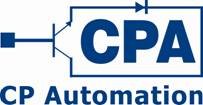In February, UK automation maintenance and supply firm CP Automation opened a branch in South Africa after receiving a record number of inquiries coming from the Sub Saharan continent.
CP Automation specialises in the supply of complimentary products to Variable Speed Drives applications, repair and field service of industrial electronic boards, PLC's, AC drives, resistors, DC drives and inverters.
"We've had a good number of enquiries for high power applications such as hoists, steel mills and mining from Africa," explained Tony Young, a director CP Automation. "The opportunities have reached a level that meant we really needed a local presence so we can make the most of this new market.
"The great thing is that we are entering a growing economy that has huge potential in the global market. There is a lot of scope to sell our products and the newly appointed country manager, Jim Rosser, formerly of Rockwell will make the South African branch a success," concluded Young.
The company believes that the new venture will complement its European business and hopes to establish long term relationships with South African partners.
"The key to success in any new country is to establish a network of local partners and create a robust supply chain,” commented John Mitchell, business development manager. “We also believe our product and service offering differs greatly from one geographic location to another.
"For instance, in Europe we mostly deal with high speed OEMS, the African industry is powered by significantly larger applications. This means that the requirements will be different, but we want to ensure the end users get the right support,” he added.
CP Automation's core strength is supplying universal peripheral equipment to drive applications including dynamic braking resistors, regenerative units, brake choppers and harmonic filters. Passive devices such as line chokes, sine wave filters and EMC (Electromagnetic Compliance) filters are also part of CPA South Africa's offering.
CP Automation's new customers can expect a wide range of products from British and European suppliers from Cressall Resistors, Re-Spa, Chiaravalli, TAE Pickatron to Comsys, Roxburgh and RevCon.

CP Automation specialises in the supply of complimentary products to Variable Speed Drives applications, repair and field service of industrial electronic boards, PLC's, AC drives, resistors, DC drives and inverters.
"We've had a good number of enquiries for high power applications such as hoists, steel mills and mining from Africa," explained Tony Young, a director CP Automation. "The opportunities have reached a level that meant we really needed a local presence so we can make the most of this new market.
"The great thing is that we are entering a growing economy that has huge potential in the global market. There is a lot of scope to sell our products and the newly appointed country manager, Jim Rosser, formerly of Rockwell will make the South African branch a success," concluded Young.
The company believes that the new venture will complement its European business and hopes to establish long term relationships with South African partners.
"The key to success in any new country is to establish a network of local partners and create a robust supply chain,” commented John Mitchell, business development manager. “We also believe our product and service offering differs greatly from one geographic location to another.
"For instance, in Europe we mostly deal with high speed OEMS, the African industry is powered by significantly larger applications. This means that the requirements will be different, but we want to ensure the end users get the right support,” he added.
CP Automation's core strength is supplying universal peripheral equipment to drive applications including dynamic braking resistors, regenerative units, brake choppers and harmonic filters. Passive devices such as line chokes, sine wave filters and EMC (Electromagnetic Compliance) filters are also part of CPA South Africa's offering.
CP Automation's new customers can expect a wide range of products from British and European suppliers from Cressall Resistors, Re-Spa, Chiaravalli, TAE Pickatron to Comsys, Roxburgh and RevCon.




